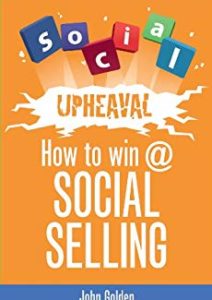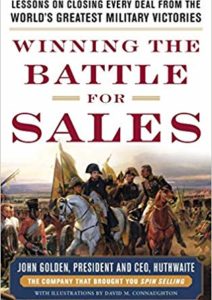Condensed from a Pipeliner SalesChat Interview with Joel Capperella
Interview by John Golden
Joel Capperella is a leading marketing consultant with 20 years of strategic marketing execution in enterprise software, SaaS and technical professional services. Joel specializes in guiding his clients to obtain bigger pipelines, increased brand and product awareness, faster revenue and empowered transformation. Joel has worked with companies of all sizes, from juggernauts like SAP and Oracle, to small startups with new injections of cash. He is also a contributing writer to Huffington Post, Fast Company, Entrepreneur, HRO Today, and ERE.
Recently Joel was our special guest on Pipeliner SalesChats, and gave us some amazing insight into the right way to bring about customer advocacy.
Q: What would be your explanation of customer advocacy, and why is it important?
A: When we think of customer advocacy, we oftentimes mistakenly think of it as something that serves us. We want to gain that level of relationship with our customers so, quite candidly, we could use them in the next deal to offer us a testimonial, or get on the phone with one of our prospects.
This self-serving approach usually results in a not-great ability to serve the customer and decreases our ability to tap into our most important customers, help them partner with us and extend our ability to sell our solutions. It needs to be customer-oriented and focused.
Q: If you’re really going to look at being customer-centric from a non-self-serving viewpoint, what are some of the things you’ve got to do?
A: Somewhere along the way I think we’ve lost the concept of being more prescriptive to our customers—in other words trying to understand their business even better than they understand it themselves. They’ve got one set of challenges within their context; we’ve got the good fortune of seeing it across multiple businesses. We see these challenges in different scenarios.
I think to achieve this level of service-oriented customer advocacy, we have to make it our business to understand those challenges across all of our customers, across the entire industry, in a way that we could identify something that benefited customer A that’s also going to equally benefit customer Z, maybe in a bit of a different nuanced way. That’s our job—to serve them in a way that’s going to let them tap into the information that’s going to help them do their jobs better.
Q: If you were going to start a customer advocacy campaign right now, how would you recommend going about it?
A: Getting back to the idea of placing their needs central, there are things we can do to begin to create a natural engagement.
For instance, every company that’s been in business for a year or 2 has at least 1 case study. I tell customers to dive into those existing case studies—look beyond the 2-page summary that actually got published. What’s the story behind it? What was behind the metrics? Who were the individual professionals on the customer side that benefited from that good? And what about the customer’s customer—how did they benefit?
You could take that 2-page piece and extend the life of it infinitely by creating additional blog posts, presentations, infographics. Video is so easy these days—get them on Google Hangouts, Skype or Facebook Live and ask them about the nuances behind the metrics.
That’s just 1 single case study. Let’s say you have 5—you could literally jack up your customer advocacy for the entire year based on just those 5.
Q: At Pipeliner we created a model called Network Selling, which is a win-win for both the buyer and seller, so that the buyer becomes the advocate and network multiplier. From your experience, how can salespeople get into that mindset of making it a win-win and almost an enjoyable experience?
A: I learned one of the best lessons of my career working with a life insurance salesman. The best life insurance salespeople have incredible networks. When they close 1 policy, they know there’s 5-10 more sales there, right in that same relationship. Nobody can talk about life insurance easily, so these salespeople serve their clients by helping them talk about what they’ve just done.
They also provide little favors, like if they’re moving they introduce them to their realtor.
Sometimes we forget about those things. The man or woman we’re selling to has a career and career aspirations. Connect with the prospect to help them advance and drive their career forward. Help them be a better manager or leader. It might not be related to our product or service at all, but it helps empower that network relationship. It helps embed us into a place of service.
Q: The period right after the purchase is a time you can really win advocates. What are your thoughts on that?
A: I thoroughly agree. I’ve worked for some really big ERP players. Back in the 00’s we could roll up a bus of 20 professionals to take down a deal—we had an expert on everything. The model doesn’t support that any longer, but the complexity hasn’t gone away. So the salesperson really has a greater burden on their shoulders.
I’ve seen that the best salespeople care intimately about the successful implementation of what they’ve just sold—they don’t just cash their commission check and move onto the next deal. They’re almost a quarterback of serving needs, and being the one “where the buck stops.”
Q: Could you give us some examples of where you’ve seen great customer advocacy programs and what they look like?
A: I have a software company I’m doing business with right now, and they’ve taken on the concept of the advisory panel. They’ve made the advisory panel customer-driven, and the panel brings up the topics they want to discuss.
What’s interesting is that the customers participate not because they are compensated or get preferential treatment—they’re not and they don’t. They feel they’re collaborative partners in what they’re trying to accomplish with the solution.
The same could be said for services. One of my professional services clients profiles the different freelance professionals that they place and that they use in their projects. They raise and elevate them to an all-star status. Each month they’re actually profiling a different professional and a different skillset, on a different job, on a different project.
It’s a good story to tell for talent, because they need more of that to be able to do these different jobs. But it’s also a portfolio of expertise they can then offer their clients: “We’ve done a job like yours, and here’s the story.” So it serves both ends.
Q: With all your experience in working with and talking about customer advocacy with people, what is the biggest mistake you see people make?
A: I think without a doubt the biggest mistake is simply not asking for the referral. Any good salesperson knows that you’ve got to ask for the business, even ask for the close. You should likewise ask for the referral.
Another big part of it is setting expectations, and doing it early in the customer relationship. “We’re going to do this for you, you’re going to love it. It’s going to have a big impact to your business and your careers, and we’re going to want you to talk about it.” You could even make it part of your contractual language.
Q: What would be the #2 biggest mistake that you see?
A: Video is so easy today. Every salesperson has a video device they’re carrying with them. We should set the expectation with our sales force that every time you have a great conversation with a customer and you’re face to face, ask them to take a selfie video with them. It might seem silly and you might be uncomfortable with it at first. But once you get in the habit of doing it, all of a sudden you have all these video testimonials.
Q: How can people get in contact with you and find out more about customer advocacy?
A: You can find me at joelcap.com. My email is joel@joelcapperella.com, and I’d be happy to chat with anyone further.
Customer Advocacy is greatly enabled by Pipeliner CRM.













